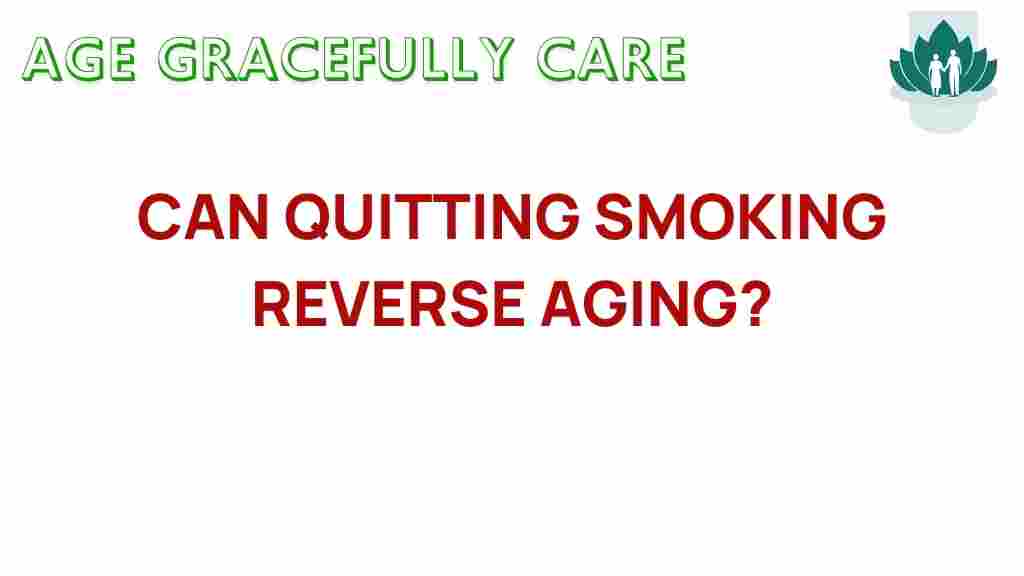Can Quitting Smoking Unlock a Fountain of Youth for Your Cells?
Quitting smoking is one of the most significant lifestyle changes a person can make for their health. Beyond the immediate benefits of improved lung function and enhanced cardiovascular health, research suggests that quitting smoking may also offer profound effects on cellular rejuvenation and longevity. The connection between smoking cessation and reverse aging is becoming increasingly clear, making it vital to understand how this decision can lead to a healthier, more vibrant life.
The Impact of Smoking on Cellular Health
Smoking has long been associated with various health issues, including cancer, heart disease, and respiratory problems. However, its effects extend to cellular health, affecting the fundamental building blocks of our bodies. Here’s how smoking impacts cellular health:
- Oxidative Stress: Smoking introduces numerous harmful chemicals into the body, leading to oxidative stress that damages cells and accelerates aging.
- Inflammation: Chronic inflammation caused by smoking can lead to tissue damage and increased disease risk.
- DNA Damage: The carcinogens in cigarettes can cause mutations in DNA, leading to cancer and other age-related diseases.
By quitting smoking, individuals can start to reverse these damaging effects, leading to cellular rejuvenation and better overall health.
Health Benefits of Quitting Smoking
The decision to quit smoking comes with a multitude of health benefits, many of which contribute to the concept of reverse aging. Some of these benefits include:
- Improved Lung Function: Within weeks of quitting, lung function begins to improve, making breathing easier and enhancing physical activity.
- Better Cardiovascular Health: Quitting smoking reduces the risk of heart disease and stroke, significantly improving overall heart health.
- Enhanced Skin Health: Smoking accelerates skin aging, leading to wrinkles and a dull complexion. Quitting can restore skin elasticity and improve appearance.
- Lower Cancer Risk: The risk of developing various cancers decreases significantly after quitting smoking, particularly lung cancer.
Cellular Rejuvenation After Quitting Smoking
When individuals quit smoking, the body begins a remarkable process of healing and rejuvenation at the cellular level. Here’s what happens:
- Reduction in Free Radicals: Quitting smoking lowers the number of free radicals in the body, which helps reduce oxidative stress and cellular damage.
- Improved Immune Function: The immune system becomes more efficient, allowing the body to repair itself more effectively.
- Increased Blood Flow: Enhanced circulation aids in delivering essential nutrients to cells, promoting regeneration and repair.
Over time, these changes contribute to feelings of increased vitality and a more youthful appearance, reinforcing the idea that quitting smoking can unlock a fountain of youth for your cells.
Steps to Successfully Quit Smoking
Embarking on the journey of smoking cessation can be challenging, but with the right approach, it is achievable. Here’s a step-by-step process to help you quit smoking:
1. Set a Quit Date
Choose a date within the next two weeks to quit smoking. This gives you time to prepare without losing motivation.
2. Identify Triggers
Recognize the situations, emotions, or activities that trigger your urge to smoke. Understanding these triggers is key to managing cravings.
3. Seek Support
Engage with friends, family, or support groups. You can also consider professional help through counseling or smoking cessation programs.
4. Consider Nicotine Replacement Therapy (NRT)
NRT can help alleviate withdrawal symptoms and cravings. Options include patches, gum, lozenges, and inhalers.
5. Develop Coping Strategies
Find healthy alternatives to smoking. Engage in physical activities, practice deep breathing, or take up a hobby to distract yourself.
6. Celebrate Milestones
Recognize and celebrate your achievements, whether it’s one day, one week, or one month smoke-free. This helps reinforce your commitment.
Troubleshooting Common Challenges
Quitting smoking often comes with challenges. Here are some common problems and tips for overcoming them:
1. Cravings
Solution: Use distraction techniques, such as going for a walk, chewing gum, or engaging in a hobby. Remember, cravings usually pass within a few minutes.
2. Withdrawal Symptoms
Solution: Stay hydrated, eat healthy snacks, and consider NRT options to manage symptoms. Exercise can also help boost your mood.
3. Weight Gain
Solution: Focus on maintaining a healthy diet and regular exercise. Weight gain can be managed with a balanced approach.
4. Social Situations
Solution: Avoid places where smoking is prevalent initially. Communicate your intentions to friends and seek their support.
The Role of Lifestyle Changes in Longevity
Quitting smoking is a significant lifestyle change, but it’s even more effective when combined with other healthy habits. Here are some lifestyle changes that promote longevity:
- Regular Exercise: Engaging in physical activity improves cardiovascular health, boosts mood, and aids in maintaining a healthy weight.
- Balanced Diet: A diet rich in fruits, vegetables, whole grains, and lean proteins supports overall health and cellular rejuvenation.
- Stress Management: Practices such as yoga, meditation, and mindfulness can reduce stress, which is crucial for long-term health.
- Adequate Sleep: Prioritizing sleep is essential for recovery and repair processes in the body.
Incorporating these changes alongside quitting smoking can lead to significant improvements in health, enhance disease prevention, and promote a longer, healthier life.
Conclusion
Quitting smoking can indeed unlock a fountain of youth for your cells, offering numerous health benefits that contribute to cellular rejuvenation and reverse aging. The journey may be challenging, but the rewards are substantial—not just for your health but for your overall quality of life. By embracing smoking cessation and making additional lifestyle changes, you can significantly enhance your longevity and reduce the risk of chronic diseases. Remember, every step toward quitting smoking is a step toward a healthier, more vibrant you.
If you are considering quitting smoking or need more information on smoking cessation resources, visit CDC’s smoking cessation page for helpful tips and support.
For more insights into maintaining a healthy lifestyle after quitting smoking, check out our comprehensive guide on healthy living strategies.
This article is in the category Health and created by AgeGracefullyCare Team
